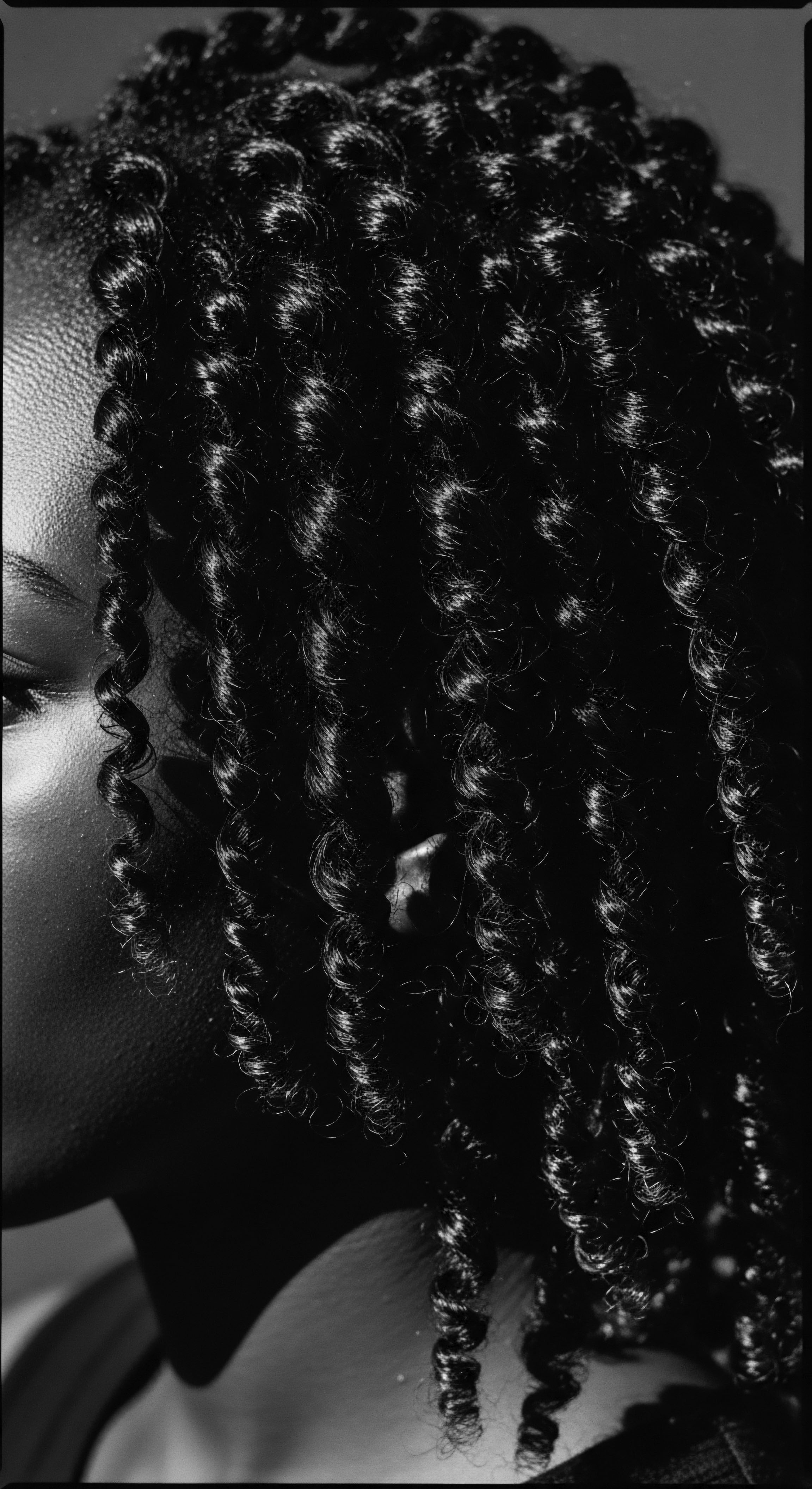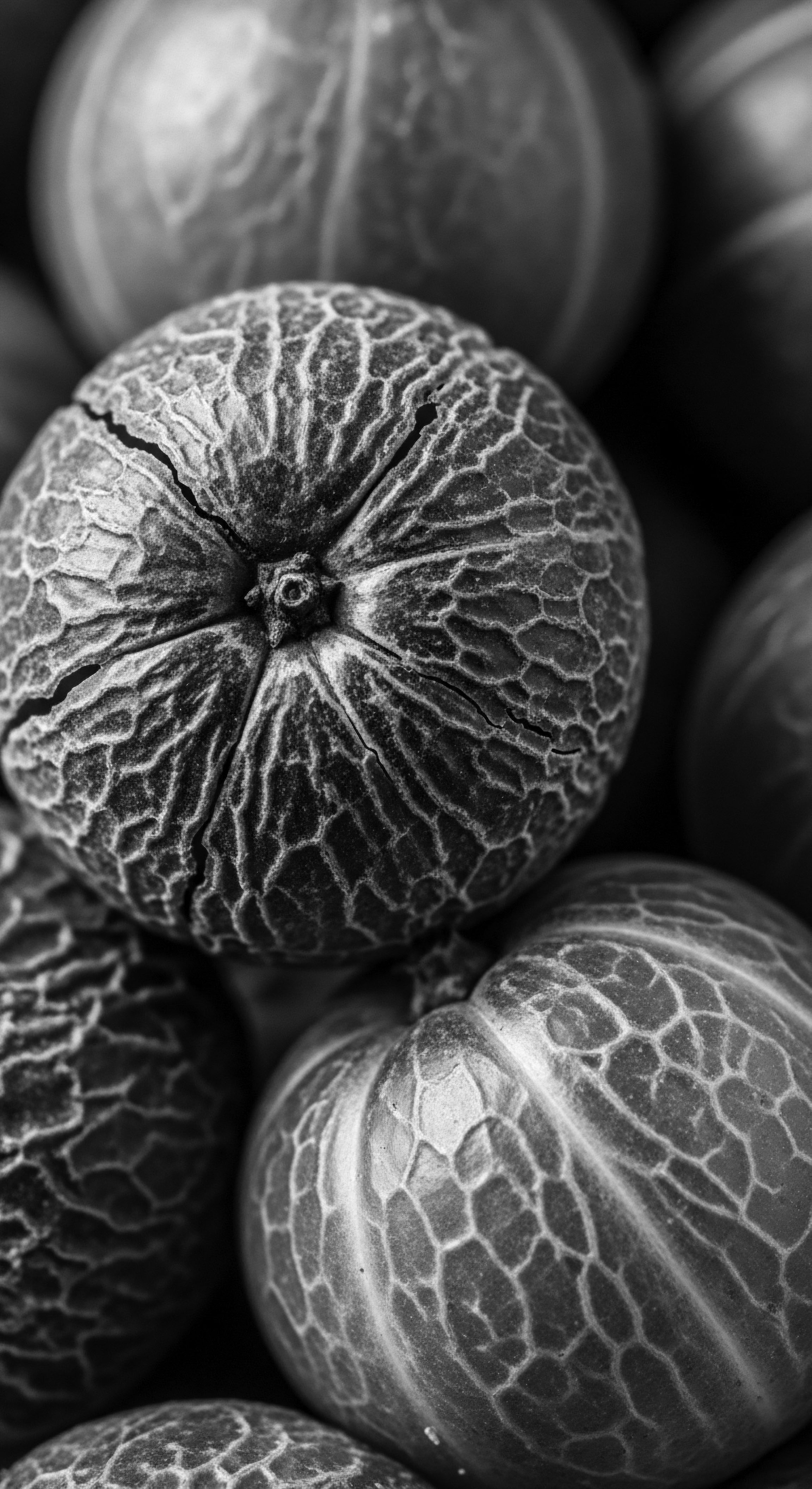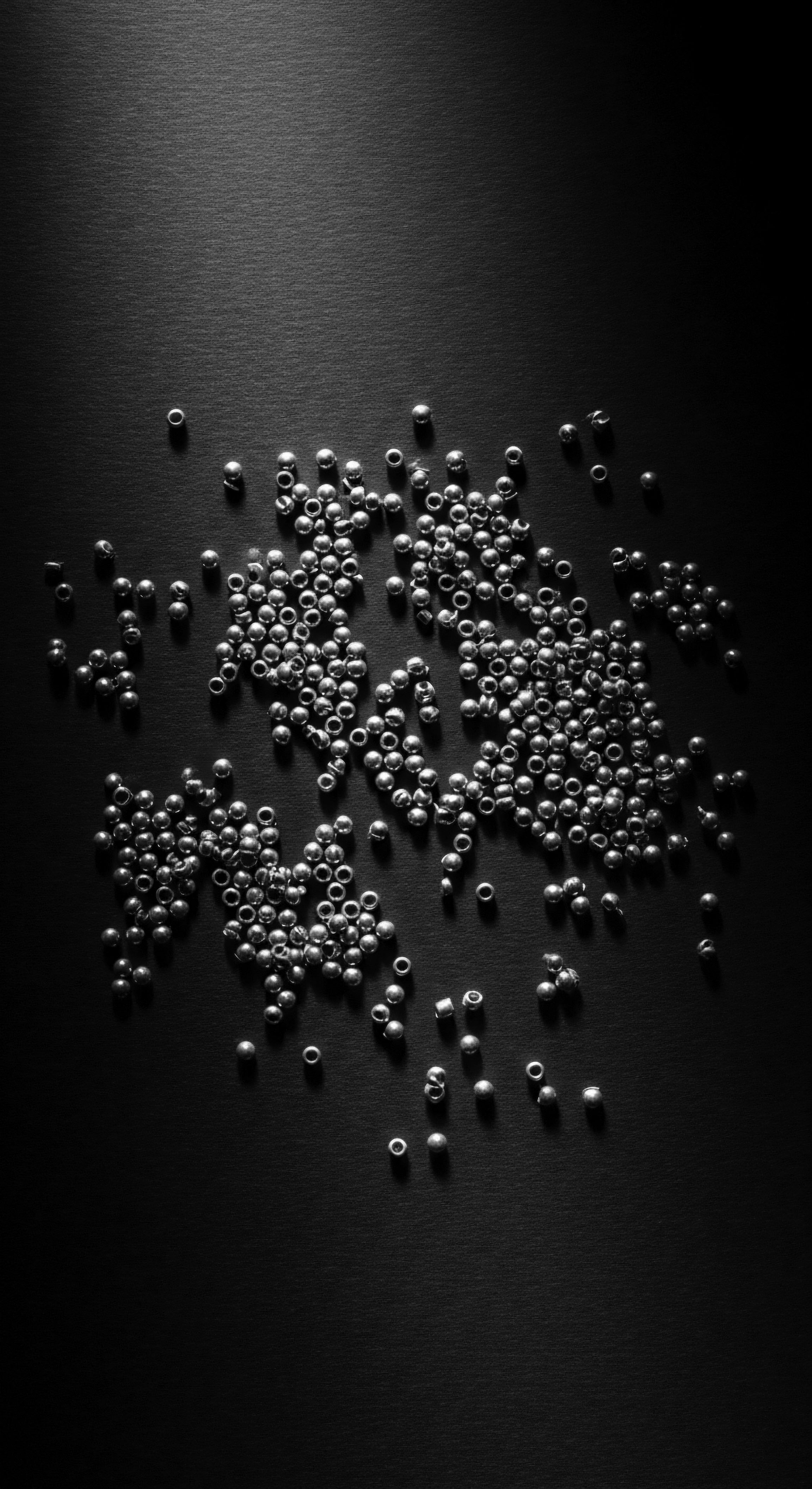
Fundamentals
The Kalahari Melon, known scientifically as Citrullus Lanatus, represents a remarkable botanical specimen, particularly within the vast, arid expanse of Southern Africa’s Kalahari Desert. It is an ancestor of the common watermelon, distinguished by its typically smaller size, pale yellow or green flesh, and a bitter taste, which sets it apart from its sweet, cultivated relatives. This hardy plant has adapted to survive extreme drought and intense sunlight, making it a crucial resource for the indigenous communities inhabiting these challenging environments.
At its heart, the Kalahari Melon is a testament to resilience, thriving where other flora falter. Its survival in such conditions is largely attributed to its water-rich fruit and, significantly, its seeds. These seeds are the source of a prized oil, extracted through methods that range from traditional sun-drying and pressing to modern cold-press techniques. The oil, often light and non-greasy, is highly valued for its unique composition of essential fatty acids, vitamins, and antioxidants.
For generations, the Kalahari Melon has served as more than just a plant; it has been a cornerstone of survival and a silent partner in the daily lives of the San and Khoisan peoples. Its utility extends beyond mere sustenance, finding its way into traditional practices for skin protection and hair care. The melon’s ability to thrive in such a demanding landscape speaks to a deep, inherent wisdom that indigenous communities have long understood and honored.

The Melon’s Place in Traditional Life
For the San people, the Kalahari Melon, often called the “Tsamma melon,” is a vital source of hydration during the dry seasons, allowing them to traverse the desert when surface water is scarce. This enduring reliance underscores its profound significance in their survival strategies. Beyond its role as a water source, the seeds of the melon have been traditionally consumed as a protein-rich snack, either raw or roasted, or ground into a flour for various culinary applications.
The oil derived from these seeds holds a venerable place in the heritage of personal care. It was, and in many ways remains, a fundamental ingredient for protecting the skin from the harsh desert sun and promoting overall dermal health. This traditional application of the oil for moisturizing and protecting the skin speaks to an ancient understanding of natural wellness, a wisdom passed down through countless generations.
The Kalahari Melon stands as a beacon of resilience, offering sustenance and profound cultural significance to indigenous communities in the arid Southern African landscape.

Initial Hair Care Applications
While often recognized for its hydrating properties for skin, the Kalahari Melon’s connection to hair care traditions is equally compelling. Ancient communities understood that the same nourishing properties beneficial for skin could also support healthy hair. The oil, rich in essential fatty acids, was traditionally applied to hair and scalp to moisturize, protect, and potentially stimulate growth. This early recognition of its benefits highlights a holistic approach to wellbeing, where the body and its adornments were cared for with reverence.
The use of Kalahari Melon oil in traditional hair care is not merely anecdotal; it reflects an inherited wisdom regarding natural emollients and their capacity to fortify strands against environmental stressors. This knowledge, passed through oral traditions and communal practices, laid the groundwork for its continued appreciation in contemporary hair wellness. The oil’s lightweight texture was particularly valued, as it offered conditioning without weighing down the hair, a quality particularly beneficial for textured hair types.

Intermediate
The Kalahari Melon, botanically identified as Citrullus Lanatus Var. Citroides, represents more than a mere desert fruit; it stands as a living testament to ancestral ingenuity and deep ecological understanding. Its natural habitat spans the vast Kalahari sands of Namibia, Botswana, and parts of South Africa and Zimbabwe, where it has evolved to thrive under conditions of extreme aridity. This particular variety is considered the wild ancestor of the common watermelon, retaining characteristics that underscore its resilience and its historical significance.
The true meaning of the Kalahari Melon within the context of Roothea’s ‘living library’ lies in its deep, interwoven connection to the textured hair heritage of Black and mixed-race communities. For centuries, indigenous peoples, particularly the San and Khoisan, have relied upon this melon not only for survival but also for their traditional beauty and wellness practices. The oil extracted from its seeds, a golden liquid brimming with vitality, has been a quiet yet consistent force in the care of textured hair, long before modern science began to unravel its chemical composition.

Ancestral Wisdom and Hair Practices
The historical usage of Kalahari Melon oil in Southern African communities provides a powerful illustration of indigenous ethnobotanical knowledge. Before the advent of mass-produced hair care products, these communities turned to their immediate environment for solutions to hair health and maintenance. The melon’s seeds, rich in lipids and proteins, were carefully harvested, sun-dried, and then pressed to yield their precious oil. This oil was then applied to hair and scalp, not just as a cosmetic, but as a protective balm against the harsh sun and dry air, and as a means to maintain the strength and vitality of hair.
The significance of this practice extends beyond mere utility; it is deeply embedded in cultural identity and ancestral wisdom. For many African communities, hair is a sacred extension of self, a conduit for spiritual connection, and a marker of social status and lineage. The intentional use of natural ingredients like Kalahari Melon oil in hair rituals speaks to a profound respect for the body and a harmonious relationship with the natural world. This historical application serves as a powerful reminder of the enduring knowledge systems that existed long before formal scientific inquiry.
The Kalahari Melon’s story is deeply etched into the heritage of textured hair, a testament to centuries of ancestral wisdom in natural care.
One compelling historical example that powerfully illuminates the Kalahari Melon’s connection to textured hair heritage and ancestral practices comes from the Khoisan People of Southern Africa. These communities, recognized as some of the oldest inhabitants of the region, have long utilized the Kalahari Melon for its multifaceted benefits. Specifically, the Khoisan Women would chew the seeds of the Kalahari Melon and apply the moistened paste directly to their skin for protection and nourishment. This practice, documented by various sources, also extended to their hair.
The omega oils present in the seeds, released through this traditional method, were understood to nourish and hydrate both skin and hair. (Khoisan Collection, 2020) This direct application of the melon’s seeds, transforming them into a living balm, highlights a sophisticated understanding of botanical properties and their direct therapeutic application for hair health, particularly in managing the unique needs of tightly coiled hair in an arid environment.

Compositional Benefits for Textured Hair
Modern scientific analysis now offers a clearer understanding of why the Kalahari Melon oil proved so effective in traditional hair care. The oil is particularly rich in Linoleic Acid, an omega-6 essential fatty acid, which can constitute between 55% to 70% of its content. This fatty acid is crucial for maintaining the integrity of cell walls, including those of the hair and scalp. It aids in building the lipid barrier, which is essential for retaining moisture within the hair shaft and protecting it from environmental damage.
Beyond linoleic acid, the oil also contains Oleic Acid (an omega-9 fatty acid), Palmitic Acid, and a significant presence of Vitamin E and other antioxidants. These components work in concert to offer a spectrum of benefits for textured hair:
- Moisture Retention ❉ The high linoleic acid content allows the oil to provide deep hydration without feeling heavy or greasy, a particular boon for textured hair types prone to dryness.
- Scalp Health ❉ Its non-comedogenic properties mean it will not clog pores, promoting a healthy scalp environment, which is fundamental for hair growth and vitality.
- Hair Fortification ❉ The vitamins and antioxidants present in the oil contribute to strengthening hair strands, potentially reducing breakage and enhancing overall hair texture.
- Natural Shine ❉ A lightweight texture and rich nutrient profile help to restore a healthy luster to dry or damaged hair, imparting a natural radiance.
This scientific elucidation does not diminish the ancestral wisdom; rather, it provides a contemporary lens through which to appreciate the profound understanding of nature’s offerings that existed for millennia. The melon’s chemistry validates the intuitive knowledge of those who first turned to it for their hair and skin needs.
| Aspect Moisturization |
| Traditional Application (Heritage) Applied directly to hair and scalp to combat dryness in arid climates, often by grinding seeds or using expressed oil. |
| Modern Scientific Understanding/Use High in linoleic acid (Omega-6) and oleic acid (Omega-9), providing lightweight, non-greasy hydration and strengthening the lipid barrier. |
| Aspect Hair Growth |
| Traditional Application (Heritage) Used by some cultures in South Africa to stimulate hair development, providing nutrients to follicles. |
| Modern Scientific Understanding/Use Rich in protein, vitamins (C, B2, E), amino acids, and antioxidants that fortify strands and support scalp circulation. |
| Aspect Scalp Health |
| Traditional Application (Heritage) Utilized for general scalp care, potentially for issues like dandruff, as part of holistic wellness practices. |
| Modern Scientific Understanding/Use Antimicrobial and anti-inflammatory properties may help combat dandruff and scalp infections. Non-comedogenic, preventing clogged follicles. |
| Aspect Protection |
| Traditional Application (Heritage) Applied to hair as a protective barrier against harsh environmental elements like intense sun and dry air. |
| Modern Scientific Understanding/Use Antioxidants like Vitamin E protect against free radical damage and environmental stressors. |
| Aspect The enduring utility of Kalahari Melon oil bridges ancestral practices with contemporary understanding, reaffirming its place in textured hair care. |

Academic
The Kalahari Melon, specifically Citrullus Lanatus Var. Citroides, represents a botanical archetype of resilience and adaptation, its very existence in the harsh Southern African desert underscoring a profound ecological narrative. This designation extends beyond a mere botanical classification; it signifies an ancestral lineage, positioning it as the evolutionary progenitor of the globally ubiquitous sweet watermelon.
Its inherent biological makeup, characterized by a robust genetic profile capable of enduring extreme drought and intense solar radiation, yields seeds that are a repository of highly beneficial compounds. The cold-pressed oil derived from these seeds is a complex matrix of lipids, particularly rich in essential fatty acids, tocopherols, phytosterols, and phenolic compounds, all of which contribute to its significant cosmetic and nutritional value.
Within Roothea’s ‘living library,’ the Kalahari Melon is not merely an ingredient; it is a profound historical document, a testament to the sophisticated ethnobotanical knowledge systems developed by indigenous African communities over millennia. The Meaning of this melon, therefore, is inextricably linked to the heritage of textured hair, particularly within Black and mixed-race experiences, where ancestral practices of care were often a direct response to environmental challenges and cultural imperatives. The delineation of its properties, both traditionally understood and scientifically validated, provides a comprehensive Explanation of its enduring significance.

Phytochemical Profile and Hair Bio-Efficacy
A rigorous examination of Kalahari Melon seed oil reveals a distinct phytochemical profile that substantiates its traditional applications for hair and skin health. The most salient characteristic is its remarkably high concentration of Linoleic Acid (C18:2), an omega-6 polyunsaturated fatty acid, which frequently accounts for 55% to 70% of its total fatty acid composition. This essential fatty acid, which the human body cannot synthesize, is critical for maintaining the structural integrity and barrier function of the stratum corneum, the outermost layer of the epidermis, and by extension, the scalp. Its presence facilitates the proper function of the skin’s lipid barrier, thereby minimizing transepidermal water loss (TEWL) from the scalp and contributing to the hydration and suppleness of hair strands.
The oil also contains significant levels of Oleic Acid (C18:1), a monounsaturated omega-9 fatty acid, typically ranging from 10% to 24%, along with saturated fatty acids such as palmitic acid (C16:0) and stearic acid (C18:0). This balanced fatty acid composition contributes to its lightweight, non-greasy texture, allowing for optimal absorption into the hair shaft and scalp without imparting a heavy residue, a characteristic particularly advantageous for the unique structural properties of textured hair.
Beyond its lipid profile, Kalahari Melon oil is a rich source of micronutrients and bioactive compounds, including various Tocopherols (Vitamin E isomers), Phytosterols (such as beta-sitosterol, campesterol, and stigmasterol), and Carotenoids. These compounds confer potent antioxidant properties, mitigating oxidative stress induced by environmental aggressors like UV radiation and pollution, which can degrade hair proteins and lipids. The presence of phytosterols also contributes to its purported anti-inflammatory effects, which can be beneficial for maintaining a healthy scalp microbiome and alleviating conditions such as irritation or dandruff.
The Kalahari Melon, a botanical marvel, offers a nuanced understanding of ancestral practices validated by its rich phytochemical composition, particularly beneficial for textured hair.

Ethnobotanical Underpinnings and Hair’s Cultural Significance
The Delineation of Kalahari Melon’s meaning extends into the realm of cultural anthropology, where its traditional usage by the San and Khoisan peoples is not merely a historical footnote but a continuous, living practice. For these communities, the melon served as a critical resource for survival in an environment characterized by extreme water scarcity. The San people, for instance, are known to have survived for weeks on the melon alone during periods of drought.
This fundamental reliance fostered an intimate knowledge of the plant’s properties, including its applications for personal care. The grinding of seeds into a paste for skin protection against the sun, a practice extending back over 4,000 years, subtly evolved to encompass hair care, recognizing the interconnectedness of skin and hair health.
The significance of hair within African and diasporic cultures cannot be overstated. It is often regarded as a spiritual antenna, a symbol of identity, status, and community. The meticulous care of hair, using locally sourced botanicals, was a ritualistic act that reinforced cultural ties and celebrated individual and collective heritage.
The application of oils, including those from the Kalahari Melon, was not just about conditioning; it was about protecting a vital aspect of one’s being, a form of self-preservation and cultural affirmation in the face of challenging circumstances. This ancestral legacy of hair care, deeply rooted in the land and its resources, stands in stark contrast to Eurocentric beauty standards that often marginalized textured hair for centuries.
A profound insight into this heritage can be found in the enduring practices of Hair Oiling Traditions across various African communities. While specific to the Kalahari Melon, this practice is part of a broader African tradition of using natural oils to nourish and protect hair. In many West African cultures, for example, the consistent application of plant-derived oils and butters, such as shea butter or palm oil, was integral to maintaining hair health and styling intricate coiffures. The Kalahari Melon oil, with its unique lightweight profile and high linoleic acid content, offered a distinct advantage in arid regions where heavier oils might attract dust or feel oppressive.
This suggests an adaptive wisdom in ingredient selection, where the properties of the local flora were perfectly matched to the environmental and hair needs. The cultural value placed on these oils, including Kalahari Melon oil, was not solely for their perceived cosmetic benefits but for their tangible role in preserving the health and appearance of hair that was, and remains, a powerful marker of identity and heritage. This long-standing tradition of hair oiling, whether with Kalahari Melon or other indigenous botanicals, illustrates a continuity of care that has been passed down through generations, affirming the deep cultural resonance of natural hair practices within Black and mixed-race communities.

Modern Validation and Future Trajectories
Contemporary scientific research continues to validate and expand upon the ancestral understanding of Kalahari Melon oil. Studies on Citrullus lanatus seed oil have highlighted its potential in modern cosmetic formulations, particularly for hair care. Research indicates that its rich fatty acid profile, especially linoleic acid, can contribute to strengthening hair strands, reducing breakage, and enhancing overall hair texture. Moreover, its non-comedogenic nature makes it an excellent choice for scalp health, helping to regulate sebum production and potentially alleviate conditions like dandruff, a common concern across hair types, including textured hair.
The Interpretation of Kalahari Melon’s utility now bridges traditional wisdom with biotechnological advancements. The process of cold-pressing, which preserves the integrity of its beneficial compounds, aligns with modern preferences for minimally processed natural ingredients. The economic implications are also significant; the sustainable sourcing of Kalahari Melon seeds often involves women’s cooperatives in rural communities, providing a vital income stream and supporting ethical trade practices.
The future trajectory of Kalahari Melon within the wellness sphere points towards a deeper appreciation of its ecological origins and cultural context. As consumers increasingly seek ingredients with transparent origins and demonstrable benefits, the Kalahari Melon stands as a beacon of natural efficacy, rooted in a rich heritage of care. Its continued Explication within academic discourse will undoubtedly reveal further nuances of its bioactivity and its enduring relevance for global hair wellness, particularly for those with textured hair who seek to honor their ancestral connections through conscious care practices.
The role of Kalahari Melon in promoting healthy hair growth, for instance, is not just a traditional claim but is increasingly supported by its nutritional composition. The oil provides ample nutrients and protein to hair follicles, which can increase the hair’s growth cycle. This scientific backing reinforces the long-held beliefs of indigenous communities, demonstrating a harmonious convergence of ancient wisdom and contemporary understanding. The melon’s journey from a desert survival tool to a revered ingredient in modern hair care products is a testament to its intrinsic value and the profound knowledge systems that first recognized its potential.
The tables below illustrate the compositional benefits and cultural applications of Kalahari Melon oil, providing a structured overview of its significance.
| Compound Class Essential Fatty Acids |
| Specific Compounds Linoleic Acid (Omega-6), Oleic Acid (Omega-9) |
| Hair Benefit (Heritage/Scientific) Maintains scalp barrier function, provides lightweight moisture, reduces frizz, enhances hair strength and elasticity. |
| Compound Class Vitamins |
| Specific Compounds Vitamin E (Tocopherols) |
| Hair Benefit (Heritage/Scientific) Antioxidant protection against environmental damage, supports scalp health, promotes healthy hair growth. |
| Compound Class Phytosterols |
| Specific Compounds Beta-sitosterol, Campesterol, Stigmasterol |
| Hair Benefit (Heritage/Scientific) Soothing and calming effects on irritated scalp, contributing to a healthy environment for hair follicles. |
| Compound Class Minerals & Proteins |
| Specific Compounds Iron, Phosphorus, Magnesium, Zinc, Amino Acids |
| Hair Benefit (Heritage/Scientific) Supports hair follicle health, provides building blocks for keratin, contributes to overall hair vitality. |
| Compound Class The intricate blend of compounds in Kalahari Melon oil validates its ancestral use and underscores its contemporary relevance for textured hair care. |
The profound impact of the Kalahari Melon is not limited to its biochemical properties; it extends into the very fabric of communal life. The harvesting and processing of its seeds, often a collective endeavor, reinforces social bonds and intergenerational knowledge transfer. This communal aspect adds another layer to its Designation as a truly significant entry in Roothea’s ‘living library,’ emphasizing that wellness is not merely an individual pursuit but a shared heritage.
The Kalahari Melon, therefore, is a symbol of interconnectedness—between humanity and nature, past and present, individual well-being and collective identity. Its study offers a rich opportunity to understand the multifaceted ways in which traditional botanical knowledge continues to inform and enrich modern approaches to textured hair care.

Reflection on the Heritage of Kalahari Melon
The journey through the Kalahari Melon’s story is truly a profound meditation on the enduring spirit of textured hair heritage. It is a narrative that begins not in a laboratory, but in the sun-drenched, ancient landscapes of Southern Africa, where the very rhythms of life were dictated by the land’s generosity. The Kalahari Melon, this seemingly humble desert fruit, emerges as a quiet yet powerful ancestor in the lineage of natural hair care, its resilience mirroring the resilience of the communities who have long cherished it. We see in its history a beautiful testament to the ancestral wisdom that recognized the earth’s bounty as the truest source of healing and adornment.
This understanding, passed down through the hands of mothers and grandmothers, from one generation to the next, speaks volumes about a holistic approach to beauty that transcends mere aesthetics. It is a care rooted in deep respect for the body and an intimate connection to the environment. The simple act of pressing oil from the melon’s seeds, a practice refined over centuries, becomes a ritual of self-preservation and cultural continuity. It is a reminder that the health of our strands is inextricably linked to the health of our heritage, a continuous thread connecting us to those who walked before us.
As we continue to navigate the complexities of modern hair care, the Kalahari Melon stands as a gentle guide, inviting us to look back, to learn from the ingenuity of our forebears, and to integrate their timeless wisdom with contemporary knowledge. Its story is not just about a botanical ingredient; it is about reclaiming narratives, honoring traditional practices, and celebrating the inherent beauty and strength of textured hair, not as a trend, but as a living legacy. The melon’s persistent flourishing in harsh conditions reminds us that true vitality often arises from deep roots and an unwavering connection to one’s authentic source. In the Soul of a Strand, the Kalahari Melon is not simply defined; it is revered, a quiet echo of a heritage that continues to inspire and sustain us.

References
- BIZ – Bio Innovation Zimbabwe. (n.d.). KALAHARI OR WILD MELONS (Citrullus lanatus) .
- Botanica Natural Products. (2023, September 27). Nutritional content and benefits of Kalahari melon oil .
- DLG Naturals Blog. (2016, July 28). Kalahari Melon Seed Oil .
- Dweck, A. C. (2018). The use of watermelon seed oil in cosmetics. International Journal of Cosmetic Science, 40(3), 245-253.
- Healing Earth. (n.d.). Kalahari Melon Body Care ❉ A San Celebration .
- Inky Ingredients. (2025, May 7). From Seed to Skin | Kalahari Melon Oil .
- Mafemo Trading. (n.d.). KALAHARI MELON SEED OIL .
- Mishra, N. K. et al. (2015). A Review on Ethno Medicinal Activity of Watermelon (Citrullus lanatus). Int. J. LifeSc. Bt & Pharm. Sci. 1(1), 140-145.
- Nêô Sephiri. (2021, October 10). THE ORIGIN OF KALAHARI MELON OIL .
- New Directions Australia. (n.d.). 100 ml Kalahari Melon Oil .
- Nkoana, D.K. et al. (2022). Nutritional, phytochemical compositions and natural therapeutic values of citron watermelon (Citrullus lanatus var. citroides) ❉ A Review. South African Journal of Botany, 145, 65-77.
- Prose. (n.d.). Best Ingredients for Hair ❉ Kalahari Melon Oil .
- ResearchGate. (2023, July 6). Citrullus lanatus seed extract’s phytochemical evaluation and investigation against Malassezia furfur (dandruff) .
- Salford Students’ Union. (2024, October 29). The Remarkable History Behind Black Hairstyles .
- Sharma, A. et al. (2024, January 16). “A REVIEW ON ROLE OF HERBS ❉ NEW PERSPECTIVES AND POTENTIAL HEALTH BENEFITS OF CITRULLUS LANATUS & CARICA PAPAYA” SEEDS. Journal of Population Therapeutics and Clinical Pharmacology .
- Wikipedia. (n.d.). Kalahari melon oil .
